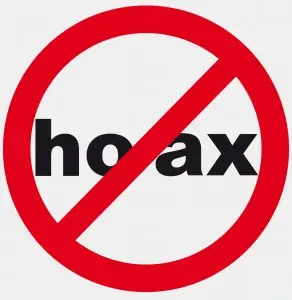What is a Hoax?
A Hoax, translated as “joke” or “deception,” is an email or other type of message that is distributed using the chain method. It is not the typical message of I love you, with a PowerPoint with hearts and kisses, asking you to send it to all your friends. That is a sappy message. Nor is it a message of the type, if you don’t send this to 10 people, a plane will fall on your head. No, that would be a stupid message. A Hoax is openly false, and its objective is to spread (like all chain emails) through deceit and the good intentions of the sender.
Typical Examples of Hoaxes:
- A child from somewhere has been kidnapped, lost, or is sick, please forward the message to help find them. (valid for dogs, cats, elderly people)
- Hotmail is going to close, or will become paid, or they need to know if the accounts are active (valid for Facebook, WhatsApp, Tuenti, etc.). If you send this message, it won’t close for you, or it will be free, and it will change color to prove that it’s true.
- If you send this message, Microsoft (or another big company) will pay you 5 cents per message. It also has another variant in which if you forward the message, they will give the money to someone who is sick or will perform a transplant, or something like that.
- The worst computer virus that exists, recognized by CNN (or McAfee, or another company) is circulating on the Internet. It is a very bad virus, if you press a key, your computer will explode. The email asks you to send the message to everyone to warn them.
Signs to identify a hoax:
There are multiple pages that are dedicated to compiling Hoaxes. However, the main characteristics that should lead us to suspect a message are:
- They are usually poorly written, with colloquial language.
- They are not signed, and have unclear or incomplete data. Names, phone numbers (although they can be given and be false). In particular, be wary of messages that lack a date and a verified reference (a link to a newspaper or website, for example).
- Some invoke the names of large companies or famous people, include logos, etc.
- They threaten you with misfortunes if you don’t send them, or rewards (for you or others) if you do.
- In any case, they ask to be forwarded to all your contacts, and to have the widest possible dissemination.
Conclusions
Although they may seem harmless, hoaxes have similarities with virus propagation. Similarly, some computer viruses use these chains to spread. Finally, the email addresses listed in these emails end up being collected in lists, which are sold for illegal activities. Please, use your brain, it takes about 10 seconds to search on Google if a piece of news is true before forwarding a Hoax.
